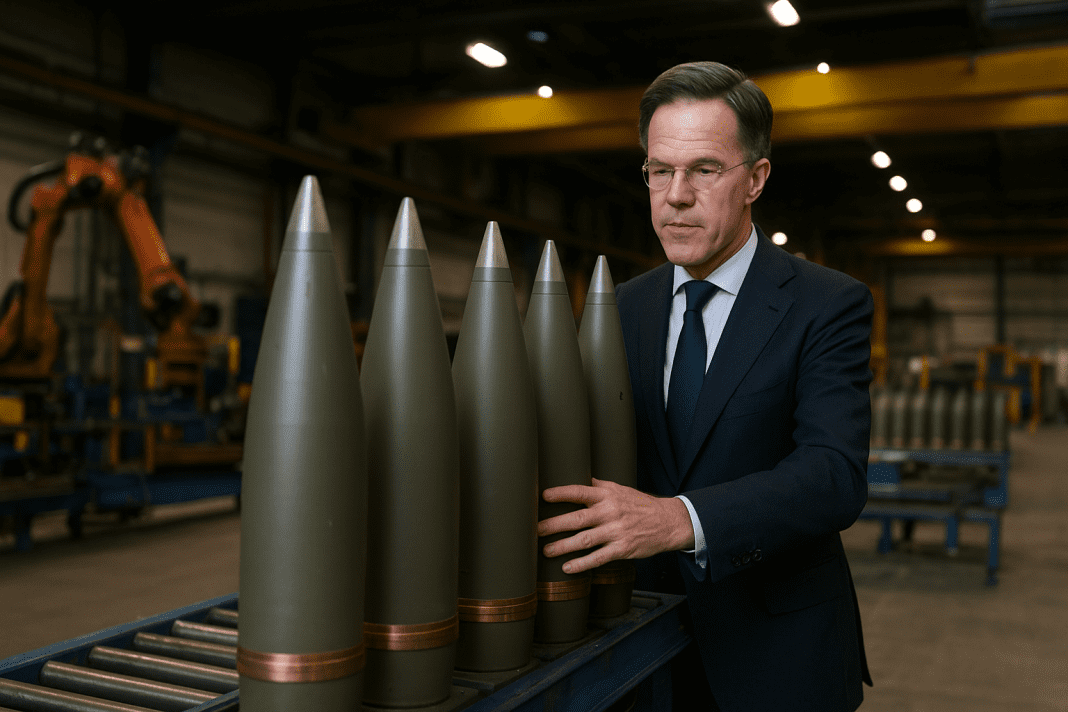Europe has achieved a massive leap in defense production over the last two years. According to NATO Secretary General Mark Rutte, European factories can now manufacture six times more artillery shells annually compared to 2022.
Sixfold Growth in Artillery Shells Output
Rutte revealed this during his visit to Germany on August 27. He explained that production is expected to reach 2 million artillery shells by the end of 2025. This marks one of the most significant expansions in Europe’s defense industry in decades.
The announcement highlights how seriously European countries are taking their defense commitments in light of ongoing Russian aggression against Ukraine. The sharp rise in artillery shells output not only strengthens Europe’s own military preparedness but also boosts the supply of much-needed ammunition to Ukraine.
🛡️ NATO unity rattled as Spain defies 5% defense pledge, Trump threatens sanctions
This improvement is particularly important as artillery remains one of the most heavily used weapons in the ongoing war. Ukraine has repeatedly emphasized the need for large volumes of artillery shells to continue defending its territory.
Rheinmetall’s New Role in Artillery Shells Manufacturing
A key part of this industrial surge is coming from Germany. NATO’s Secretary General made the announcement while inaugurating a new Rheinmetall artillery plant in Unterluess, Lower Saxony. This facility is now recognized as the largest artillery production site in Europe.
Rutte noted that Rheinmetall accounts for a “big part” of the overall growth. The factory itself plans to produce 350,000 artillery shells every year, a substantial contribution to Europe’s defense capabilities.
Rheinmetall opens plans for gunpowder and ammunition plants in Bulgaria for NATO needs
The plant’s scale underscores how much Europe’s defense sector has evolved since Russia’s full-scale invasion of Ukraine in 2022. In the early months of the war, many European nations faced criticism for being unable to quickly meet the urgent demand for artillery shells. Production bottlenecks caused delays in delivering arms and ammunition to Kyiv.
Now, with new investments and larger facilities, the continent’s defense industries are catching up. Leaders like Rutte have stressed that Europe can use this new momentum to expand other essential areas too, including tanks, air defense systems, and missile production. He also acknowledged that Ukraine’s own efforts in mobilizing its industries serve as an example for NATO allies.
Increased Defense Spending Across Europe
The surge in artillery shells production is just one part of a broader push by European nations to strengthen military capacity. Pressure to invest more in defense has grown, especially after Donald Trump returned to office as U.S. President in January 2025. Trump has long criticized Europe for not spending enough on its own security.
At the NATO summit in The Hague in June, allies responded by agreeing to raise their defense spending target. For decades, the target was set at 2% of GDP. Under the new agreement, the target has now increased dramatically to 5% of GDP. Importantly, military aid to Ukraine will count toward this new spending requirement.
Alongside NATO’s moves, the European Union has launched its ReArm Europe program. This initiative is designed to raise an additional 650 billion euros ($750 billion) in defense spending. It also includes a plan to offer 150 billion euros ($170 billion) in defense-related loans.
5% Defense Spending Shock: Bold NATO Proposal Ignites Hope and Concern
This scale of investment reflects how European leaders are responding to the challenges posed by the war in Ukraine and the shifting global security environment. By increasing both production and spending, Europe is aiming to ensure steady supplies for its allies and its own armies.
The rapid rise in artillery shells output shows how quickly Europe’s defense industries can grow when pushed by urgent needs. From producing far fewer shells only two years ago, the continent is now on track to deliver millions annually, marking a turning point in its defense posture.
